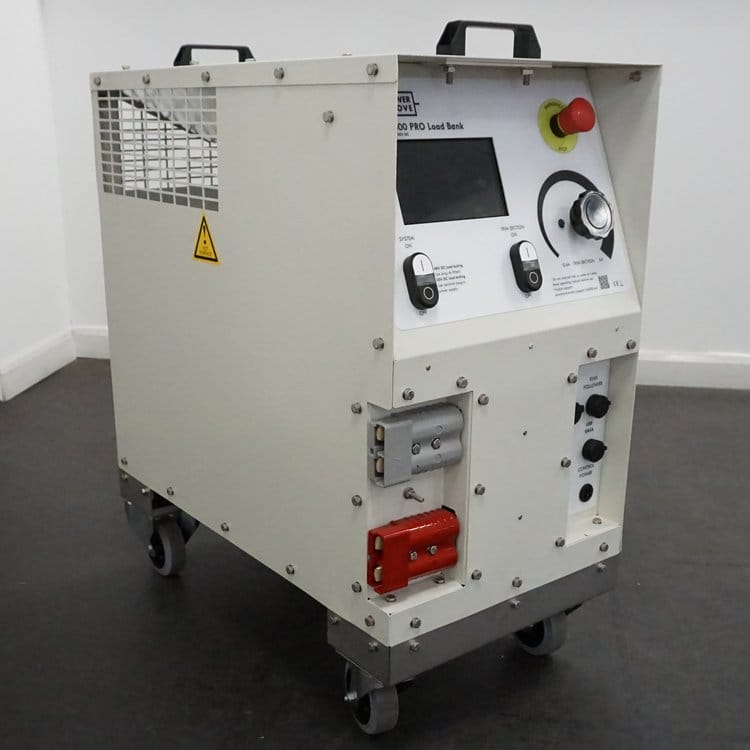~ Battery discharge testing for offshore environments ~
As the demand for reliable energy solutions in remote and offshore environments continues to rise, battery discharge testing has become a critical component in ensuring the efficiency and reliability of power systems. This is especially true for offshore vessels, oil platforms, wind farms and remote research stations, where consistent and dependable power is paramount. Here, Andrew Keith, director of load bank manufacturer Power Prove, explains the importance of battery discharge testing for offshore applications ensuring reliability, safety and power in critical applications.
Battery discharge testing is essential for verifying the capacity and performance of power supplies used in critical applications. In offshore environments, where access to power grids is non-existent, battery systems must be able to reliably store and deliver power.
According to the International Energy Agency‘s World Energy Outlook 2023, the growth of renewable energy capacity, including offshore wind and solar PV, is accelerating significantly. Offshore wind capacity is projected to increase substantially, driven by policy support and technological advancements. By 2030, the IEA expects a major boost in offshore wind installations, which will contribute to the diversification of energy sources and enhance energy security. While positive for securing clean energy delivery, maintenance of these offshore environments poses a challenge.
Ensuring uninterrupted power supply
Batteries play a crucial role in offshore wind installations, providing essential services that enhance the reliability, stability, and efficiency of the wind farm. Key applications include store excess energy generated during high wind periods, and supplying it when wind is low, providing backup power to critical systems and helping to reduce the load on the grid.
Battery discharge testing is essential for ensuring the reliability and longevity of battery systems used in offshore environments. This process involves discharging a battery under controlled conditions to measure its capacity and performance. Regular testing helps identify potential issues before they become critical, ensuring an uninterrupted power supply in case of a power loss.
Offshore wind installations require reliable backup power to maintain operations during periods of low wind or maintenance activities. Regular discharge testing ensures that backup batteries can deliver the necessary power when needed, enhancing the overall stability and efficiency of the wind farm.

Load bank solutions
A primary method for discharge testing in offshore settings is the use of load banks. They simulate the electrical load, allowing for precise measurement of battery performance under various conditions. This testing method is critical for verifying the capacity and efficiency of batteries, especially in environments where maintenance opportunities are limited and failures can have severe consequences
Static measurements of battery performance, such as a no-load voltage or impedance, often fail to provide a comprehensive view of a battery’s actual health or capacity. Therefore, load testing plays a crucial role in most installation and maintenance programs. When complete operational records are unavailable or batteries are nearing the end of their expected life cycle, conducting a discharge test with a load bank offers clear evidence of the battery’s condition, indicating whether it needs replacement.
Power Prove’s standard range of portable DC load banks are user-friendly and ideal for on-site load testing of most battery systems, even in critical environments. They support voltages up to 240V DC and continuous power outputs up to 30kW.
The DC600-PRO load bank from Power Prove excels with its robust design and advanced features, ideal for comprehensive battery testing. It dissipates up to 30kW at 50V (600A) providing an efficient way to test significant battery systems.
With precise control and measurement capabilities, the DC600 PRO provides accurate and consistent test results, crucial for identifying issues and verifying battery health. Its portability and ease of use make it an indispensable tool for maintenance professionals needing regular field testing and diagnostics, even off-grid and remote.
As offshore industries continue to embrace sustainable and efficient power solutions, battery discharge testing remains a cornerstone of ensuring operational reliability, especially in remote and off-grid environments. By leveraging advanced battery technologies and management systems, offshore operations can achieve greater energy efficiency and reduce emissions. However, safety enabled through regular and rigorous discharge testing is not just a best practice but a necessity for maintaining the integrity and performance of these critical power systems.








